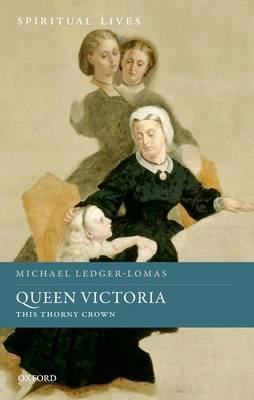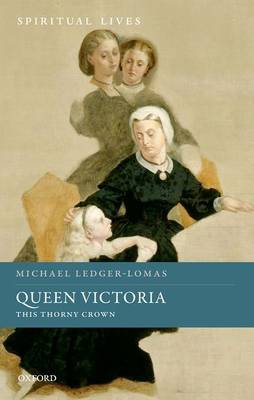
- Afhalen na 1 uur in een winkel met voorraad
- Gratis thuislevering in België vanaf € 30
- Ruim aanbod met 7 miljoen producten
- Afhalen na 1 uur in een winkel met voorraad
- Gratis thuislevering in België vanaf € 30
- Ruim aanbod met 7 miljoen producten
Zoeken
€ 70,95
+ 141 punten
Omschrijving
This biography evokes the pervasive importance of religion to Queen Victoria's life but also that life's centrality to the religion of Victorians around the globe. The first comprehensive exploration of Victoria's religiosity, it shows how moments in her life--from her accession to her marriage and her successive bereavements--enlarged how she defined and lived her faith. It portrays a woman who had simple convictions but a complex identity that suited her multinational Kingdom: a determined Anglican who preferred Presbyterian Scotland; an ardent Protestant who revered her husband's Lutheran homeland but became sympathetic towards Roman Catholicism and Islam; a moralizing believer in the religion of the home who scorned Sabbatarianism. Drawing on a systematic reading of her journals and a rich selection of manuscripts from British and German archives, Michael Ledger-Lomas sheds new light not just on Victoria's private beliefs but also on her activity as a monarch, who wielded her powers energetically in questions of church and state. Unlike a conventional biography, this book interweaves its account of Victoria's life with a panoramic survey of what religious communities made of it. It shows how different churches and world religions expressed an emotional identification with their Queen and Empress, turning her into an embodiment of their different and often rival conceptions of what her Empire ought to be. The result is a fresh vision of a familiar life, which also explains why monarchy and religion remained close allies in the nineteenth-century British world.
Specificaties
Betrokkenen
- Auteur(s):
- Uitgeverij:
Inhoud
- Aantal bladzijden:
- 368
- Taal:
- Engels
- Reeks:
Eigenschappen
- Productcode (EAN):
- 9780198753551
- Verschijningsdatum:
- 8/06/2021
- Uitvoering:
- Hardcover
- Formaat:
- Genaaid
- Afmetingen:
- 132 mm x 201 mm
- Gewicht:
- 498 g

Alleen bij Standaard Boekhandel
+ 141 punten op je klantenkaart van Standaard Boekhandel
Beoordelingen
We publiceren alleen reviews die voldoen aan de voorwaarden voor reviews. Bekijk onze voorwaarden voor reviews.











